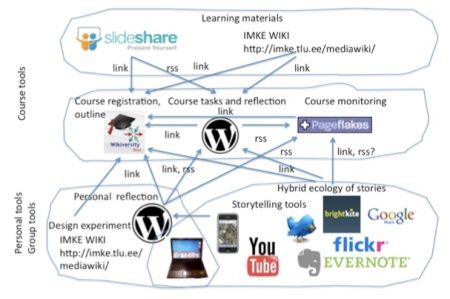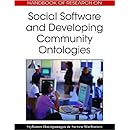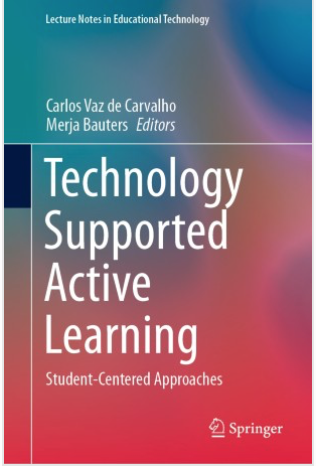Today i sent away my paper: Modeling spaces for self-directed learning at university courses to the special call of Journal of Educational Technology & Society. I hope it is of some interest, although to go through the review process is always very hard 🙂
The main idea is to bring out the ecological learning design framework elements and show how they were applicable at the course design.
In the article I pointed to the need for the new learning design frameworks for self-directed learning with social software that were ecological. This learning design emphasizes the following aspects, which were developed and tested empirically.
The basic steps of an ecological learning design framework for supporting self-directed learning in new social Web are:
1. Define the learning and teaching niches for your students by collecting their affordance perceptions of their learning spaces.
a) To support the conscious self-managed development of learner-determined spaces, provide students with the tools of visualizing and monitoring their activity-patterns and learning landscapes, and enhancing public self-reflection and collaborative grounding of learning affordances.
b) To maintain coherence of the current niche, introduce cycles of re-evaluation of learning affordances of the learning space within your course.
2. Try to influence the niche re-emergence by embedding activity traces and ecological knowledge relevant to evoke affordances for certain niches or select activity systems where these traces are naturally present.
3. Use same social learning environments repeatedly to gain from feedback left as activity traces and embodied knowledge of earlier learners.
Theoretically, in the self-directed learning process students should be promoted to use their own personal learning environments. Thus, the learning environment as a system of tools and resources cannot be ready when learning starts but has to evolve as part of learners’ self-directed individual and collaborative action process in which facilitator has a guiding role.
To run emergent bottom-up courses, facilitators would need to establish some constraints and guidelines for planning the learning process. Rather than composing a list of optional course tools, resources and activities, an abstract learning space might be determined for the course design and made explicit to the learners.
This article proposes that learners’ perception of action potentialities of their personal and collaborative learning environments – learning affordances – could be dynamically collected in a bottom up manner during learners’ public planning of their goals, visualization, and self-reflection of their learning activities and learning environments.
Knowing these learning affordances and making the abstract learning space explicit for the learners and for the facilitator would permit:
i) the individualized learner-specific integration of their goal-directed activities with other perceived components, resources and community activities in the environment; and
ii) the reuse of the commonly perceived affordances for environmentally adaptive self-direction.
In this study the course for self-directed learning with social software and the ideas of an ecological learning design framework were simultaneously developed.
The emergence of the course’s learning space would consist of cycles of developing and monitoring the learning niches. Such dynamical monitoring and grounding of the mutually used learning affordances was possible and practiced during both courses. For this learners’ schemes and reflective postings in their weblogs were used. It is assumed that if some tools were available for learners and facilitator to visualize the niche with less analytical effort during the course of action, this might increase the use of affordances as niche gradients in adaptive shaping of self-directed learning.
Knowing the fundamental learning niche characteristics enables to develop particular list of suggested activities and plan appropriate instructions during the course. It was found that students perceived many affordances that are related with planning, reflecting and evaluating personal learning in collaborative social software settings. Potentially these affordances could be further used for activity design.
When planning participation at the courses and for choosing tools and resources for personal learning environments, self-directed students might need information of the affordances that a particular course community perceives in relation to certain tools.
In this paper the factor analysis brought out that some types of social software might offer a unitary affordance perception possibility while others would evoke different types of affordances. In is assumed that, during the learning activity the latter software would serve as multifunctional for switching from one learning niche to another.
I have not analyzed in this paper the particular differences between learning niches (eg. for individual or collaborative activities) that form the learning space, but there is evidence in my other studies that such distinguishable niches appear within the general learning space.
One of the expectations of investigating the course learning space at consequent years was to see if the fundamental learning space for self-directed learning with social software was stabile and potentially replicable while students had a big freedom of using various tools.
The ANOVA analyses demonstrated that while the use of different types of social software differed significantly at Cases I and II, the affordances were used with similar frequency at both cases. This permits to conclude that the affordance-based learning space description might be re-used in the course design as a guideline for students and the facilitator, for deciding which affordances should be evoked at the course.
Coupling this affordance-based learning space description with the descriptions of the affordances that certain community has activated with certain types of tools, and considering individual perception of affordances of the personal learning environment, enables learners to participate at joint course activities with their own tools.










